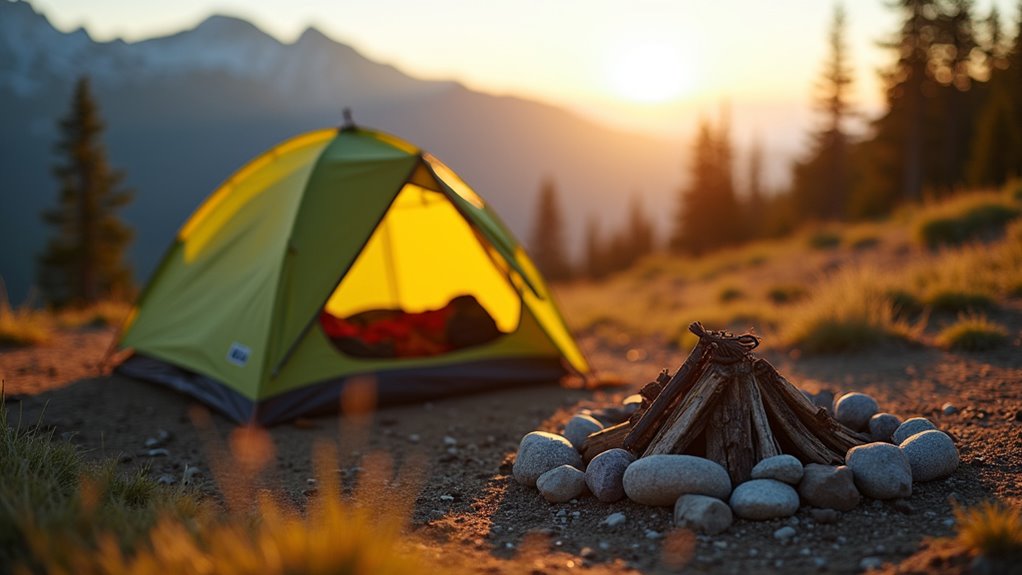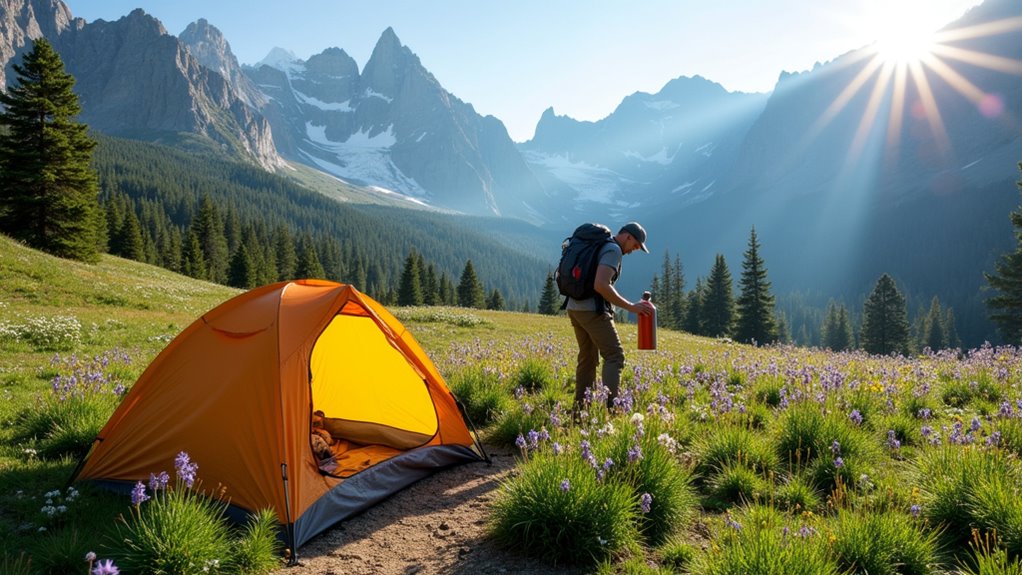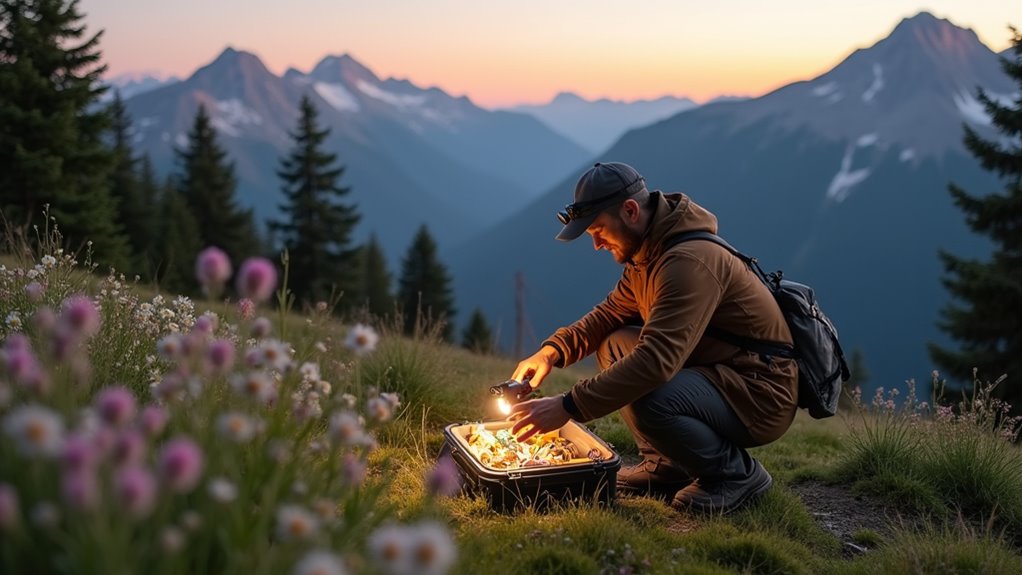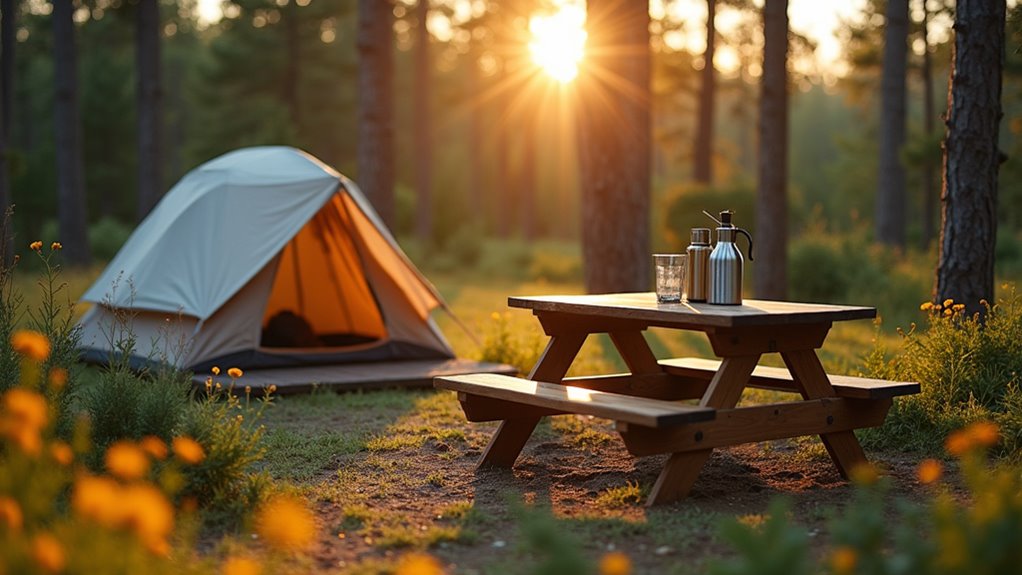Physical Address
304 North Cardinal St.
Dorchester Center, MA 02124
Physical Address
304 North Cardinal St.
Dorchester Center, MA 02124

Uncover the essential difference between regular camping and responsible camping that protects wilderness areas and wildlife for future generations.
You’ve probably seen them—campsites littered with trash, fire rings surrounded by charred trees, and wildlife rummaging through abandoned food scraps. These scenes aren’t just eyesores; they’re the result of campers who forgot one essential thing. The difference between camping and responsible camping isn’t about having more gear or experience—it’s about understanding your impact on the environment and other outdoor enthusiasts. Here’s what separates truly responsible campers from the rest.

When you venture into the wilderness, you’re entering a delicate ecosystem that deserves your respect and protection. The Leave No Trace principles aren’t just guidelines—they’re essential practices that preserve nature for future generations.
Plan ahead by researching regulations and preparing for weather conditions. Travel on durable surfaces like established trails and rock to minimize erosion. Dispose of waste properly by packing out all trash and burying human waste 6-8 inches deep. Leave natural objects untouched—don’t move rocks or pick flowers.
Minimize campfire impacts by using established fire rings and completely extinguishing flames. Respect wildlife by observing from a distance and storing food securely. Be considerate of other visitors by keeping noise levels down and camping away from trails. Knowing which items to leave at home is equally important for responsible camping preparation. These practices ensure wilderness remains pristine.
Your campsite selection directly impacts the environment around you, making it one of the most important decisions you’ll make during your outdoor adventure. Look for established campsites with compacted soil and existing fire rings rather than creating new ones.
Avoid fragile areas like meadows, wetlands, or vegetation that takes years to recover from damage.
Stay at least 200 feet away from water sources to protect wildlife corridors and prevent contamination. Choose durable surfaces like rock, gravel, or bare ground when possible.
If you must camp on vegetation, pick hardy grasses over delicate alpine plants.
Consider wind patterns and natural shelter to minimize your need for additional structures. Camp in areas that won’t require moving rocks or clearing debris, preserving the natural landscape for future visitors.
When selecting your campsite, also ensure you have easy access to clean water sources since staying properly hydrated is crucial for preventing dehydration while camping.

Although proper waste disposal might seem straightforward at home, wilderness camping requires a completely different approach to protect ecosystems and water sources. You’ll need to pack out all trash, including food scraps, wrappers, and hygiene items. Don’t bury organic waste – animals will dig it up, disrupting their natural diet and behavior.
For human waste, dig catholes 6-8 inches deep and 200 feet from water, trails, and camp areas. Pack out toilet paper or use natural alternatives like smooth stones or leaves. Carry a lightweight trowel for digging.
Dispose of gray water from cooking and washing at least 200 feet from water sources. Strain food particles first and pack them out. Use biodegradable soap sparingly, as even eco-friendly products impact wilderness environments.
Following Leave No Trace principles ensures that future campers can enjoy pristine wilderness areas just as you found them.
Wildlife encounters rank among camping’s most memorable experiences, but they require careful preparation and respect for animal behavior. You’ll need to maintain proper distances—at least 25 yards from most wildlife and 100 yards from bears and wolves.
Don’t feed animals, as this creates dangerous dependencies and aggressive behavior toward future campers.
Store food in bear-proof containers or hang it properly between trees. Keep your campsite clean and dispose of grease and food scraps appropriately.
If you encounter wildlife, don’t run unless it’s a last resort. Instead, make yourself appear larger, back away slowly, and speak in calm, firm tones.
Remember that you’re visiting their home. Observe quietly, take photos from safe distances, and leave animals undisturbed for everyone’s safety.
Vegan campers can enjoy wildlife encounters with the same safety principles while maintaining their plant-based lifestyle throughout their outdoor adventure.

When managed properly, campfires provide warmth, cooking capability, and memorable gathering spots, but they also pose significant wildfire risks that demand your careful attention. Always check fire restrictions before camping, as many areas prohibit fires during dry conditions.
Use established fire rings when available, or create a safe fire pit by clearing a ten-foot diameter area down to bare soil. Keep fires small and manageable—you shouldn’t need logs larger than your wrist. Never leave your fire unattended, even briefly.
When it’s time to extinguish, pour water over all embers, stir the ashes thoroughly, then add more water. The ashes should feel completely cool to your bare hand before you leave the site. Following proper campfire safety protocols ensures you’ll have a memorable outdoor experience while protecting the natural environment for future generations.
While you’re enjoying nature’s tranquility, remember that you’re sharing these spaces with fellow campers who’ve also come to escape the hustle and bustle of daily life. Keep noise levels reasonable, especially during quiet hours. Don’t blast music or have loud conversations that’ll carry across the campground. Respect campsite boundaries and don’t cut through others’ spaces.
Control your pets by keeping dogs leashed and cleaning up after them. Pack out all trash and leftover food rather than leaving it for others to deal with. When hiking, yield trail right-of-way appropriately and keep groups together to avoid blocking paths.
Turn off bright lights that might disturb neighboring campsites. During winter camping excursions, prioritize keeping essential body areas warm to prevent hypothermia and ensure everyone’s safety and comfort. These simple courtesies ensure everyone can enjoy their outdoor experience peacefully while preserving nature’s serenity for future visitors.

Your gear choices directly impact both your camping experience and the environment around you. Invest in durable, multi-purpose equipment that’ll last for years rather than cheap items you’ll replace frequently.
Choose rechargeable solar-powered devices over disposable battery-operated ones. Pack biodegradable soap and toothpaste to minimize water contamination. Select lightweight, compact gear to reduce your pack weight and transportation fuel consumption.
Bring reusable containers instead of single-use plastics. Pack cloth napkins rather than paper towels. Choose camping cookware made from sustainable materials like bamboo or recycled aluminum.
Don’t forget a portable water filter to avoid buying bottled water. Repair damaged gear before trips instead of replacing it. Smart packing means bringing only what you need while ensuring everything serves multiple purposes and respects nature. Remember that proper gear selection can make the difference between an enjoyable adventure and a challenging ordeal in the wilderness.
You’ve learned the wilderness commandments – now it’s time to walk the walk. Like Johnny Appleseed spreading seeds across America, you’re planting positive change with every responsible camping trip. Your thoughtful actions ripple outward, preserving these natural cathedrals for countless adventurers yet to come. Don’t just pitch a tent and call it camping; become a steward of the wild. Pack light, tread lightly, and leave only footprints behind.